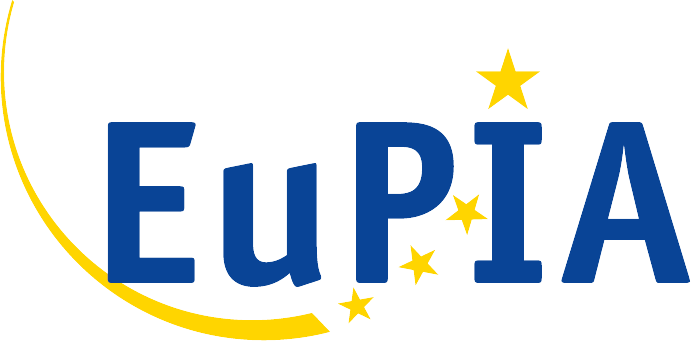The True Value of Printing Inks
Take a look around you. What do you see? That latest lunchtime shopping purchase waiting to be opened. That beautiful wallpaper you spent hours choosing.The latest novel you’re reading, your children’s school books.
Your lunch, a coffee-to-go, a carton of fruit juice, a chocolate bar.All the bright, colourful things in life depend on it, and we consume it without even noticing. Ink – the most important medium of communication, education and decoration in our society.
Inks deliver social value ...
But ink and the clear varnishes and coatings that are used to protect printed images have to deal with a huge variety of conditions and requirements. We need ink to print on thousands of different substrates, and it has to withstand extremes of temperatures, humidity and weather conditions, being handled without rubbing off, or deliberately coming off when needed. In some of its more specialist applications ink conducts electricity, changes colour depending on temperature and helps protect against counterfeit and fraud. Nevertheless, the integrity of the printed image must always remain intact, as it is there to serve a purpose. On food packaging for example it displays dietary information, or storage and handling instructions which can for example reduce the chance of wasted produce. In its most serious role, ink educates and informs, updating us on world events and warning us of danger. Ink also helps us to make life choices; which products to buy, what direction to travel in, what message to send our loved ones. In its most dramatic role it colours our lives and enhances a beautiful world for us to live in.
... and economic value
With about 80 printing ink manufacturers, employing some 12,000 people across Europe, it’s easy to see why printing ink is not only a vital medium for communication and education, but it is also a key contributor to the European economy.
In Europe, some 1 million tonnes of ink and coatings, costing €3bn are consumed by printers of all kinds of products every year. This equates to 2kg of ink for every man, woman and child in Europe, which, when you consider that is enough ink to print 35 daily newspapers or 24,000 chocolate bar wrappers, is a lot of ink!
But that is just the tip of the economic iceberg. Almost every product we buy in supermarkets or other retail outlets comes in some kind of printed packaging. Smithers Pira sizes the value of all printed packaging and labels across Europe at €89bn is 2019, growing at an average of 2.2% per year to 2024 in real terms (4.3% including inflation), not to mention the products contained inside. Add to that the revenues generated by other printed material; newspaper and magazine advertising income exceeds €40bn per annum and book sales in Europe exceed €23bn per annum to mention just two, and you soon realise that ink is a vital component of multibillion Euro businesses, directly employing millions of European workers.
For all these reasons, ink and coatings which protect, educate and enhance the lives of every one of us should not be taken for granted, but should be celebrated and enjoyed.
Could you imagine a world without colour – a world without ink?
Printing inks are tailor-made products
Printing inks are tailor-made products developed to meet specific print technology and end user demands. In order to serve those demands, today there are more than 1 million individual ink formulations in use across Europe.
These formulations are applied in all the different printing and/or coating processes; such as flexography, gravure, offset, screen, letterpress, non-impact printing and roller coating, and, depending on the process, they can be solvent-borne, water-borne, oleo-resinous or energy-curing (UV or electron beam) mixtures.
Since one single formulation can never meet all the possible technological and end use requirements, the manufacturers have formulated solutions to almost every known requirement of an ink.
Printing inks are complex mixtures of substances.
Printing inks, coatings and varnishes are mixtures manufactured from combinations of colourants (pigments, dyes), binders, solvents and additives.
A broad raw material base is vital for this wide variety of formulations, and this is especially true for the additives, which, although they are used in comparatively small quantities, are essential for the ink to meet its required converting characteristics. It is in this area that the specific know-how and intellectual property of individual ink manufacturers lies.
The raw materials may be single chemical substances, but are most likely to be mixtures of a number of different substances which results in inks typically containing 20 – 60 unique chemical compounds.
Printing inks are NOT toxic.
When correctly used for their intended purpose, printing inks do not place workers or consumers at risk.
Toxic raw materials are not used at all, nor are raw materials known to be carcinogenic, mutagenic or toxic for reproduction (CMR). This principle is laid down in the EuPIA Exclusion Policy for Printing Inks and Related Products. It encompasses all types of printing inks for all types of printing processes.
Whenever unacceptable human or environmental risks are identified, action is taken by the ink industry, including the voluntary removal or substitution of the hazardous substances, often well before any comparable regulatory initiatives come into effect.
Printing inks for food contact materials are formulated so that the converter is able to meet his legal obligations, and this is ensured by a variety of measures including:
- Targeted selection of raw materials
- Controlled manufacture according to GMP standards
- Specific and relevant information given to the converter
